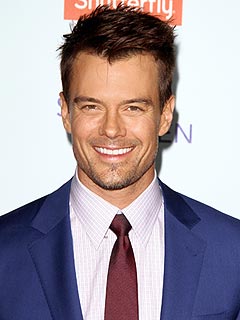CAIRO — Secretary of State John Kerry told Egypt’s political and business leaders on Saturday that it was urgent their country institute economic reforms and satisfy the conditions the International Monetary Fund has set for a $4.8 billion loan.
“It is paramount, essential, urgent that the Egyptian economy get stronger, that it gets back on its feet,” Mr. Kerry told a group of Egyptian and American business executives in Cairo. “It’s clear to us that the I.M.F. arrangement needs to be reached, that we need to give the market that confidence.”
Mr. Kerry’s visit — his first trip to an Arab capital as secretary of state — comes at a time of economic peril in Egypt. The country’s economy has teetered near collapse for months, with soaring unemployment, a gaping budget deficit, dwindling hard-currency reserves and steep declines in the currency’s value.
The fund’s loan is critical, economists say, because it would provide a seal of approval that Egypt’s economy is on a path toward self-sufficiency, allowing it to obtain enough other international loans to fill in its deficit. Both the United States and the European Union are prepared to provide substantial additional assistance if Egypt and the I.M.F. can come to terms.
But even as Mr. Kerry stressed the need for prompt economic steps — and the political peace needed to achieve those changes — some opponents of President Mohamed Morsi sought to put the spotlight on the nation’s uneasy political course.
Parliamentary elections are scheduled for April. The major opposition group, the National Salvation Front, has announced that it plans to boycott the vote to protest what it says is a push by Mr. Morsi and his Islamist allies to dominate politics.
The Obama administration has been criticized by some of Mr. Morsi’s rivals as being too supportive of the Egyptian president, as has Mr. Kerry, who was the first American senator to meet Mr. Morsi.
The delicacy of the issue was apparent when members of the political opposition were invited to a Saturday session with Mr. Kerry. Some members, including Hamdeen Sabahi, who came in third in the presidential election last year, decided not to attend. Mohamed ElBaradei, one of the leaders of the National Salvation Front, chose not to go, but to speak by phone with Mr. Kerry instead.
Those that attended, Mr. Kerry later said, engaged in a “very, very spirited” discussion.
Mohamed El Orabi, a former foreign minister and a leading member of the National Congress Party who went to the meeting, said that Mr. Kerry had talked about the importance of democracy while driving home his message on the economy.
Mr. Kerry also met separately with Amr Moussa, a former secretary general of the Arab League and the head of the National Congress Party.
The two years of tumult that began with the ouster of former President Hosni Mubarak has sharply slowed foreign investment and tourism, and economists say the Egyptian government urgently needs a cash infusion of several billion dollars to fend off the risk of an economic calamity that could lead to more unrest and instability.
In September, the United States brought more than 100 business executives to Cairo to encourage trade and economic development. But continuing political protests, including when demonstrators scaled the walls of the American Embassy here on the anniversary of the 9/11 terrorist attacks, discouraged many businessmen from following up, Mr. Kerry noted. (The protesters that day were angry over an amateurish American-made video denouncing Islam.)
The International Monetary Fund has held on-again, off-again negotiations with Egypt for more than a year about providing the $4.8 billion.
The fund has imposed two difficult conditions. It has required the Egyptian government to commit itself to undertaking painful reforms like raising taxes and reducing energy subsidies.
It has also required a demonstration of political support for the reforms and the loan, to ensure that the government will honor its commitments in the future. That requires a dependable political process, as well as a degree of consensus that Egypt’s political factions have been unable to sustain.
On Sunday, Mr. Kerry is scheduled to meet with Mr. Morsi. The secretary of state said he would discuss specific steps the United States could take to boost the Egyptian economy if Egypt worked out a loan package with the I.M.F. That will be Mr. Kerry’s final meeting in Egypt before departing for Saudi Arabia, the seventh stop on his nine-nation tour.
The protests and street violence that have destabilized Egypt’s transition continued Saturday. The Egyptian state media reported that a demonstrator in the Nile Delta city of Mansoura was killed when he was run over by an armored police vehicle.
Violence also flared again in the Suez Canal city of Port Said, where the state media reported that protesters had burned down a police station. The Port Said protests began Jan. 26 after 21 local soccer fans were sentenced to death for their role in a deadly riot at a match last year.
But over the past month, the demonstrations in Port Said have blurred together with sometimes-violent protests in several other cities along the Suez Canal or in the Nile Delta. Some protesters are angry at Mr. Morsi and the Muslim Brotherhood, accusing them of failing to deliver fast enough on the anticipated rewards of the revolution, including economic benefits.












